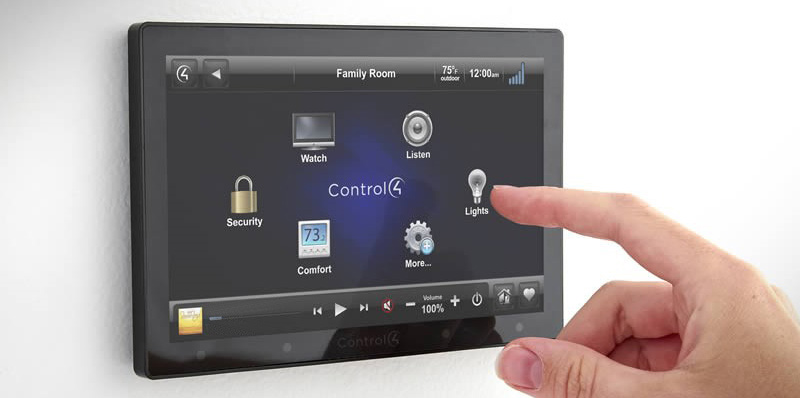Over the past 5 years, I’ve seen a couple exterior lighting manufacturers jump solidly into the lighting controls game. There are certainly advantages and disadvantages to purchasing lighting systems with extensive controllability. My purpose here is to help you decide if a system with extensive control features is right for you and worth the investment, or if more basic functions will suffice.
The Purpose of Advanced Lighting Control Features:
People use their outdoor spaces in two ways. First, these outdoor spaces will be used to entertain guests or for relaxing and enjoying a warm evening outside by the pool or patio.
Secondly, a significant portion of the lighting we design is intended for providing security or aesthetic beauty. We view it when pulling into the driveway from work or when admiring the outside landscaping from a living room window.
So, where does the need for lighting control come into play for these types of areas? Why would a person need to control the individual function of a specific light fixture or groups of fixtures?
- Dim or brighten bistro lighting to affect the mood of a space. Bistro lights are brighter than traditional LED landscape lights and will often need to be dimmed accordingly. (This can also be done with a simple, inexpensive manual control.)
- Individual light fixtures placed close to bedrooms with someone who is light sensitive can be shut off at bedtime. (Proper planning can mitigate these issues.)
- A group of lights can be shut off around a hot tub or pool if a more secluded and intimate atmosphere is desired. (This can also be done with a simple, inexpensive switch.)
- Luminaires with color changing ability can be themed and controlled for parties and events. (This is the most effective use of these controls.)
An Expensive Way to Design…

Admittedly, some of the features of lighting controls for the situations listed above are convenient. Most of the manufacturers who market these high-end controls place an emphasis on zoning or dimming functionality. This way installers can “tweak” the lights after installation to create a balanced look.
Huh?!? Come again?
What these manufacturers have done is create a product that appeals to the average lawn and landscape jockey who has very little understanding of lighting design. These types of systems allow them to forego much of any pre-planning at the outset of the project in favor of installing and then adjusting after the fact via the dimming function to suit their eye.
This raises a question to me. Aren’t we as lighting designers being hired to pre-visualize the project beforehand and create a balanced design by choosing the correct luminaires with precise lumen outputs and selected beam spreads prior to installation? Pre-planning of a lighting design requires experience to visualize the effects before they have been applied.
Sadly, unwitting homeowners who are not doing their due diligence are paying a premium to these underqualified lawn jockeys and landscape companies for a product that costs twice as much. This for functionality they will probably never use, and still end up with an inferior design in the end.
A good lighting designer will never compromise the aesthetics and balance of a design. A good designer will also keep a client’s budget in mind. They will pre-plan the proper luminaire to be used with a keen understanding to light sensitivity, visual balance, and degree of control needed for each situation.
Why would a consumer pay two to three times as much for lighting products with features that are unnecessary, only to accommodate the deficiencies of the team they are hiring to design the lighting?
This is baffling to me. A project that is designed correctly with proper levels of illumination and visual balance, is something one would never adjust from its optimal settings anyway. So why should a consumer need these advanced functions if the lighting is designed correctly to begin with? That’s a great question that begs an answer.
Outdoor Lighting Control… A Most Underused Feature

Over the years I’ve installed many systems that employed lighting controls to varying degrees. When I am visiting the job for an annual cleaning or tune-up, I’ll often ask a client how they are enjoying their lighting. I then ask if they’re happy they chose to go with the advanced controllability of their lighting. With very few exceptions, most clients say that they rarely ever touch the controls or turn groups of lights off at night.
I’m told that when they do, it leaves a dark hole in the lighting design which is distracting and unattractive. They comment that the lighting design looks better as a whole rather than a part. So, what they thought was going to be a handy feature which they imagined using often, rarely ever gets touched.
Therefore, it is so important for a client and their designer to evaluate whether the additional expense of these controls is going to be warranted and necessary for the project from the beginning. Most often, basic on/off functionality paired with proper design is the most recommended approach to getting the greatest value and enjoyment from your outdoor lighting system.
Lighthouse Outdoor Lighting® is the leader in outdoor lighting design. Call us today and experience how a real lighting designer can provide you with the most comprehensive and thorough lighting design expertise available today.

